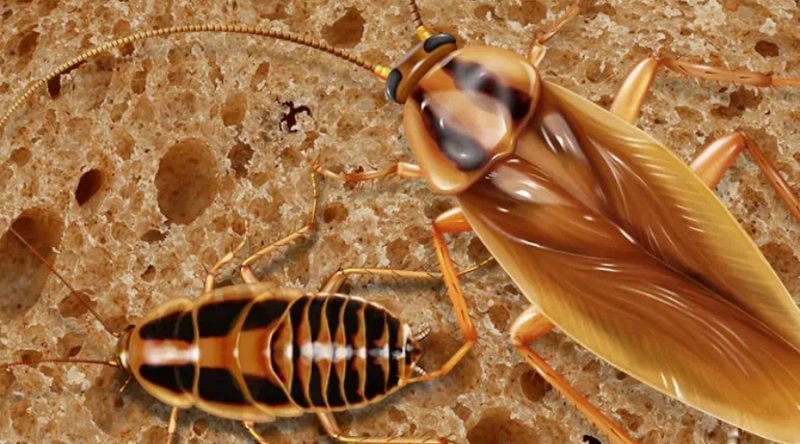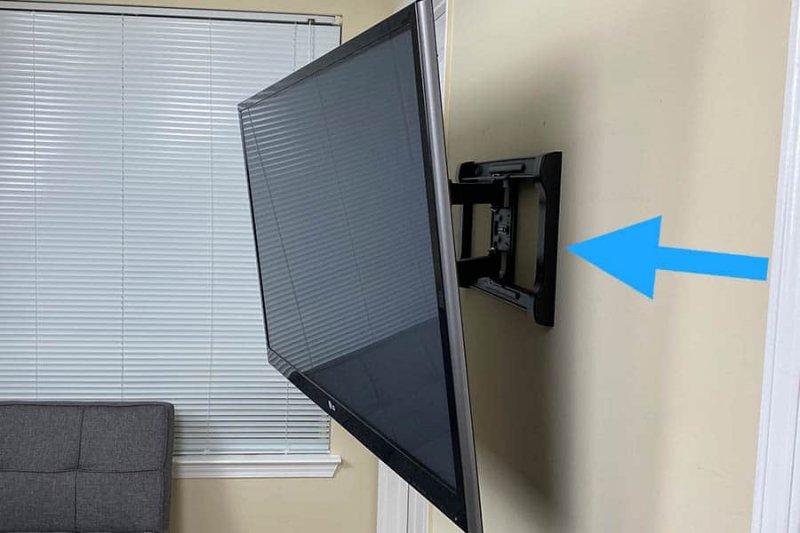Have you found a baby cockroach? We need to act FAST!
A baby cockroach isn’t cute. There’s no time to waste. You’ll need to take action if you discover one. What’s the reason?
The presence of even a single baby roach can indicate a much bigger problem. The problem must be solved before it spreads. Not only will you protect your home, but possibly the health of your family as well.
Here’s what it means to find a baby cockroach, where it came from, and if it’s actually something else. The way to deal with more tiny roaches is also discussed if the cockroach is a cockroach. Are you ready? Here’s our chance to solve this not-so-tiny problem!
To make sure every treatment is as effective as possible, always read and follow the instructions on the insecticide label.
Step One: Know what’s at stake
Baby Roaches Can Be Harmful
It doesn’t matter how big or how small roaches are, you don’t want them living in your house. There is nothing more disgusting than cockroaches. The same risks apply to babies as they do to adults. Crawling around disgustingly dirty places and eating disgusting foods is what they spend their time doing. These bacteria, viruses, molds, fungi, and worms are then carried away by them and deposited elsewhere.
Food poisoning can be caused by cockroaches, as you probably guessed.
You might have spotted a baby cockroach scurrying across your kitchen counter at night, leaving behind a wealth of disease-causing bacteria. It also defecates when it breaks into your pantry to eat your food. Everyone is fecating. The food itself, the shelves, and the walls.
The chances of your family getting food poisoning are high if you do that. The list goes on and on. As a result of its droppings and shed skin, asthma attacks and allergies can be triggered. Your children may even develop asthma as a result.
That’s why you shouldn’t have even one baby cockroach in your home. There’s even worse news on that front. Whenever there is a baby cockroach, there is always more than one. Many cockroaches, including adults, are likely hiding unseen in the bushes.
The best way to combat cockroaches is to understand how they reproduce, and how the baby roach you noticed (and its horde of siblings) got there.
Baby Roaches Are More Common Than You Think
Cockroaches are egg-laying insects like other insects. Female cockroaches lay their eggs in an egg sac called an ootheca, which contains up to 48 eggs, depending on the species. Every time the female lays an egg, she produces one baby cockroach (also called a cockroach nymph), creating a lot of tiny roaches.
Cockroaches can reproduce so quickly that females don’t need mates at all.
Over her life cycle, which usually lasts less than a year, she produces between 6 and 30 egg cases, resulting in hundreds of baby roaches. Usually, there is more than one female. The number is large. A remarkable rate of reproduction is observed in all of them.
The rapid spread of cockroaches is caused by this. The females of some cockroaches can reproduce without a mate because they are so good at reproducing. What is the spread of cockroaches? It’s done quickly.
Step Two: Find the bugs
Across the counter, you see a bug scampering around.
Despite its roach-like appearance and movement, it is wingless and smaller than other cockroaches you have seen. A different color may also be present. There may even be a slight difference in shape. What kind of cockroach is it? Is it a beetle? Is there another explanation?
You can find out by putting on gloves and catching or killing one. Comparing it with the cockroach nymphs below, examine it closely.
Step Three: Get Rid of Baby Roaches and Prevent Their Recurrence
When you discover you do have a baby cockroach infestation, you need to get rid of them as soon as possible. Make sure they won’t return by taking precautions.
Common Myths
Let’s dispel a few common myths about cockroaches.
Myth #1: Size Matters
A common misconception is that the larger the roach, the bigger the problem. There is no truth to this. A baby cockroach can carry disease and shed allergens as well as a large cockroach.
Myth #2: A Clean House Ensures That You Won’t Get Roaches
Maintaining a clean home does not necessarily make you safe. It is easier for roaches to access food and hiding places in dirty homes, but if they can find food, water, and shelter in a clean home, they’ll happily invade it.
Myth #3: Roaches Are Invincible
Unfortunately, no. There is no such thing as an invincible cockroach.
It is possible to kill them and then control them. Natural enemies like centipedes and wasps may already be keeping them in check. Don’t believe anyone who tells you that roaches can live for decades. It is rare for roaches to live more than two years.
How does it all work? By understanding what you are up against and taking smart action now, you can be roach-free forever.
Action Step 1: Sanitation and Exclusion
Make your home less attractive and hospitable to roaches, including the adults, as the first step in your action plan. There will be fewer bugs, fewer of them will survive and breed, and some of those that do enter may simply leave. This step is vital if you want to avoid experiencing the same problem over and over again with baby cockroaches:
- Make sure your home is thoroughly cleaned. Food shouldn’t be left out. Every night after dinner, clean up the kitchen. When your pet doesn’t finish their food, store it somewhere rather than leaving it out. Make sure spills and crumbs are cleaned up. It’s even possible to vacuum up cockroaches and oothecae (the egg sacs female cockroaches lay) while you’re cleaning.
- Water is also essential to cockroaches (which they need to drink). It is a good idea to empty standing water at night. Don’t let water pool in sinks or on counters. The best way to prevent cockroaches from drinking water is to repair leaky plumbing and search for condensation sources.
- Get rid of any clutter inside and outside the house so they don’t have a place to hide. To get rid of them, bag up the small appliances they inhabit (e.g., a toaster) and freeze them for five days. Temperatures below freezing are too cold for cockroaches.
- Make sure they don’t get in. Make sure there are no holes or cracks where they could enter. Make sure the doors, windows, pipes, and baseboards are in good shape.
- Although you used bait during the extermination process, make sure you keep a few around, and check them regularly to make sure they’re still effective.
Action Step 2: Extermination
It’s time to strike the intruders hard after laying the groundwork with sanitation and exclusion.
Your method of doing that will be either killing them (definitely), or preventing them from reproducing (possibly). In both cases, you should act quickly to prevent the situation from worsening. Using insecticides and baits will also help you control roaches.
It is also possible to hire a professional cockroach exterminator with experience and skills in using those products.
If You’re Doing It Yourself
You’ll need to assess your roach problem honestly, then educate yourself about the chemicals and how to use them if you want to DIY. This page will give you a basic overview, then we’ll go into more detail elsewhere.
Okay, so. There are two types of insecticides considered best for cockroach infestations, and they should both be used simultaneously:
- Insect growth regulators, or IGRs, should be used for the nymphs. A baby cockroach that eats some IGR won’t grow up because they inhibit insect growth.
- You can use cockroach insecticides or natural products like boric acid or diatomaceous earth on adults. Educate yourself on the risks associated with every product before using it, even natural cockroach treatments.
- These active ingredients include abamectin, cyfluthrin, cypermethrin, deltamethrin, dinotefuran, fipronil, hydramethylnon, imidacloprid, and indoxycarb. There are dusts, liquids, and gels available, and they can be applied directly to surfaces (not counter tops, walls, or open floors) or placed in bait stations along baseboards or in corners.
The following products may be of assistance if you have a problem with roaches
When you have just a few cockroaches, you need to find their hiding places and kill them as soon as possible
All cockroaches should use this product
The Exterminator’s Choice Sticky Glue Traps
Measures and monitors cockroach infestations and provides some supplemental control.
Insecticide BASF PT P.I. Contact
Insecticide PI kills roaches quickly with its pyrethrin-based spray. While not as inexpensive as off-the-shelf sprays, it is far more effective when used as a supplement to other treatments.
The Best Way to Kill Cockroaches in Your Home
It is recommended for German cockroaches and brown banded cockroaches as well as American cockroaches (Palmetto bugs, Water bugs, Tree roaches, Sewer roaches), and Oriental cockroaches.
CimeXa Dust Insecticide from Rockwell Labs
CimeXa treats cracks and crevices in indoor spaces effectively. The best results are achieved if Advion Gel Bait is used along with Gentrol IGR.
Duster for diatomaceous earth powder by HARRIS
Using a duster tool is the best way to apply insecticidal dusts like CimeXa. CimeXa, Delta Dust, and other recommended dusts work well with this diatomaceous earth duster.
Gel bait for cockroaches by Syngenta Advion
Advion poisons first the roaches that eat it, then kills others in a secondary attack. Combine CimeXa insecticidal dust with Gentrol IGR for the most effective indoor treatment.
Gentrol Point Source IGR
A chemical called Gentrol interferes with roach reproduction by acting as an insect growth regulator (IGR). It works best when combined with Advion Gel Bait and CimeXa insecticidal dust.
Cockroaches should be killed outdoors before they can get inside
Suitable for American cockroaches, Oriental cockroaches, and Smokybrown cockroaches (Palmetto bugs, Water bugs, Tree roaches, Sewer roaches).
Suspended insecticide by Bayer Polyzone
The Suspend insecticidal liquid stops outdoor roaches before they enter foundations, entries, and walls. An outdoor crack and crevice treatment like Delta Dust works best alongside a granular outdoor bait like Intice (see below).
The Chapin Multi-Purpose Sprayer has a capacity of 1 gallon
Sprayers are required for liquid pesticides. Small jobs can be handled with this inexpensive pump sprayer.
Bait granules for perimeter insect control from InTice
The InTice granular bait kills roaches outdoors and in areas like your garage or attic. The entire perimeter of your home can be protected if combined with a spray treatment like Bayer Suspend and a crack and crevice treatment like Delta Dust.
Delta Dust Insecticide Dust
Attics, exterior walls, plumbing lines, and high-moisture areas benefit from Delta Dust’s waterproof and long-lasting treatment. Some areas are restricted from using Delta Dust.
If You’re Going to Call a Pro
Our recommendation is to call a pest control company if you believe you have a severe infestation of roaches. Professionals are equipped with specialized knowledge and equipment as well as years of experience. Pros can do an inspection for you even if you think you might want to do it yourself.
It’s Time to Take Action!
It’s time to identify those tiny bugs scuttling around your house now that you have the knowledge you need. If it’s a baby cockroach, you’ll know what’s at stake and what needs to be done. Hopefully your home is now pest-free, so good luck and happy bug hunting!
Frequently Asked Questions
How many babies do roaches have at one time?
Every time a female cockroach lays an egg sac, she can produce a large number of eggs (and future hatchlings). The average age of Brown-Banded roaches is around 18. Around 16 for American and Oriental cockroaches. It can reach 32 for Pennsylvania Wood Roaches. The number of German roaches can reach 50.
How many babies can a cockroach have over a lifetime?
It is possible for cockroaches to produce a large number of young. Cockroaches, for example, lay on average one egg sac per month, each containing 16 eggs. An egg sac containing up to 50 eggs may be laid by a German roach every month. German cockroaches can produce up to 350 babies over the course of their lifetime, whereas American cockroaches produce 150.
How many baby roaches can one have in a home?
It’s impossible to control the number of baby or adult roaches that infest a home as long as they have access to food and water.
Can baby cockroaches fly?
I don’t. A baby roach does not have wings when it is born. As nymphs, however, their wings are either nonexistent or too underdeveloped to enable them to fly.
Do baby cockroaches jump?
I don’t. Baby roaches have legs that aren’t made for jumping, so they can move quickly, but they can’t jump.
Do baby roaches bite?
It is possible that roaches could bite you, but for the most part they avoid close and dangerous contact with humans. There are times when baby roaches bite, but they are not very common.
Are baby roaches white?
The occasional time. A baby cockroach is briefly white when it hatches, then briefly white again when it molts.
What are baby roaches called?
Cockroach nymphs are roaches in their final stages of development, from hatching through growth.




Post Comment